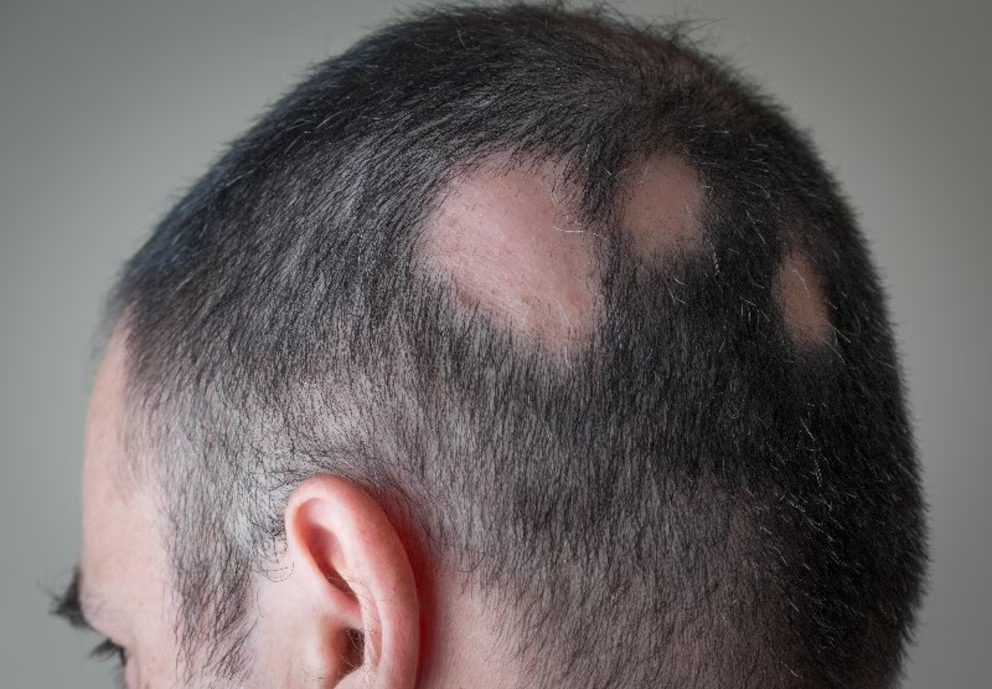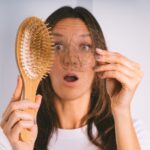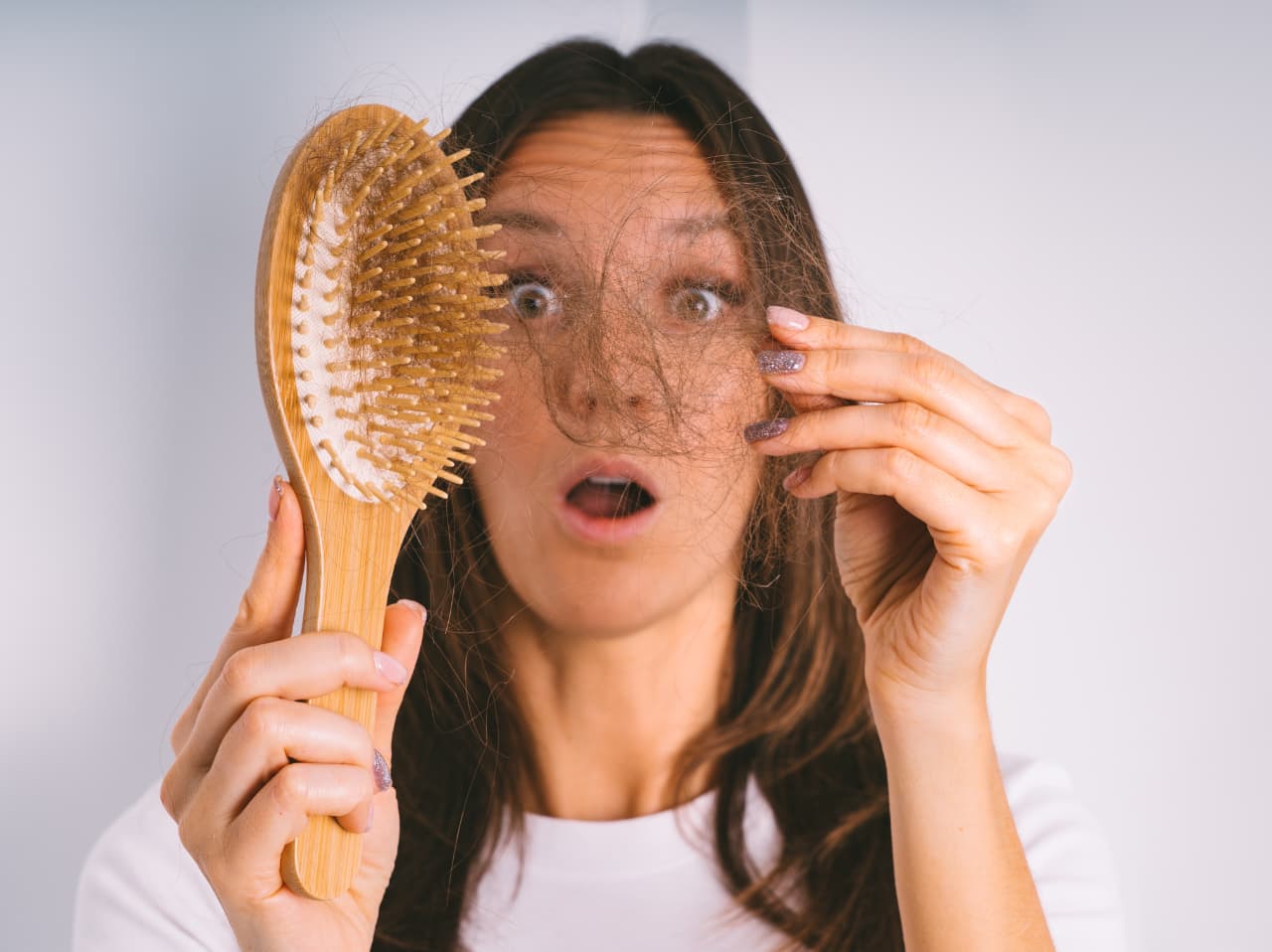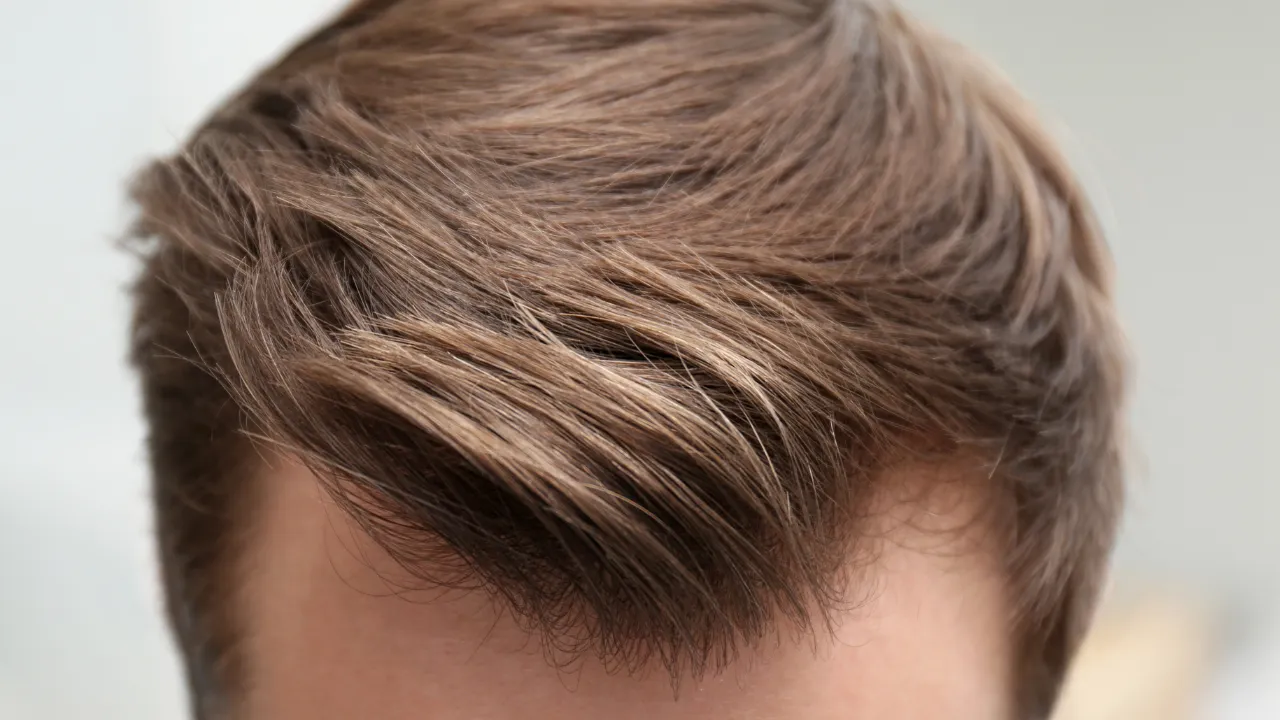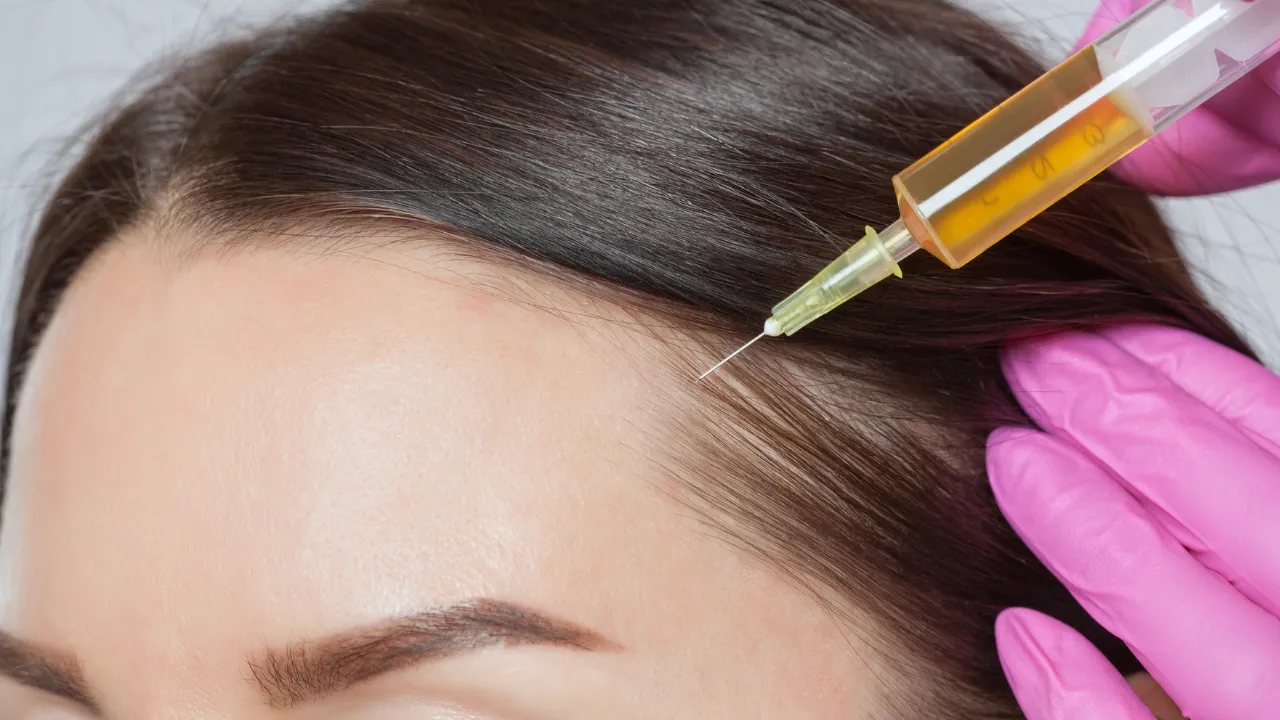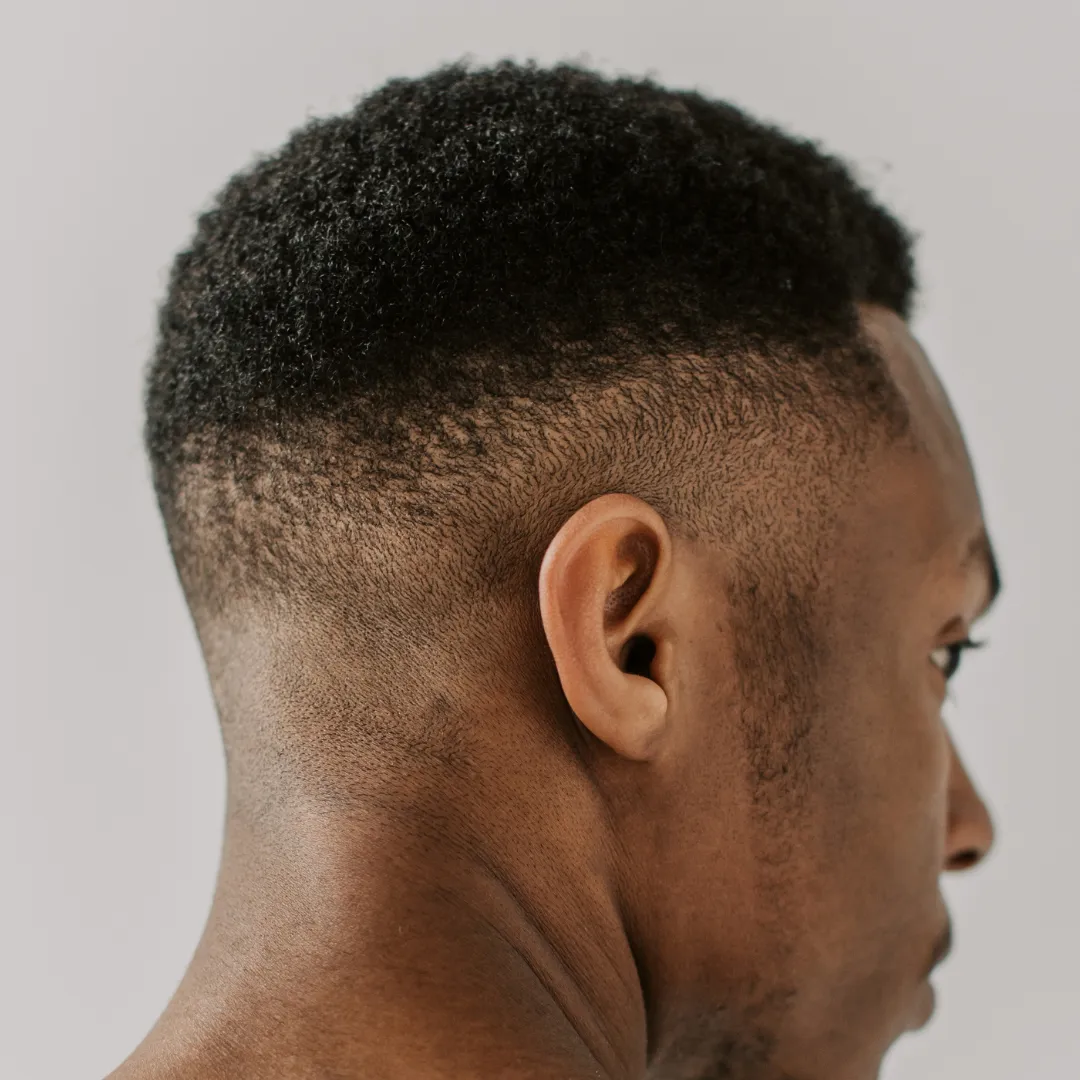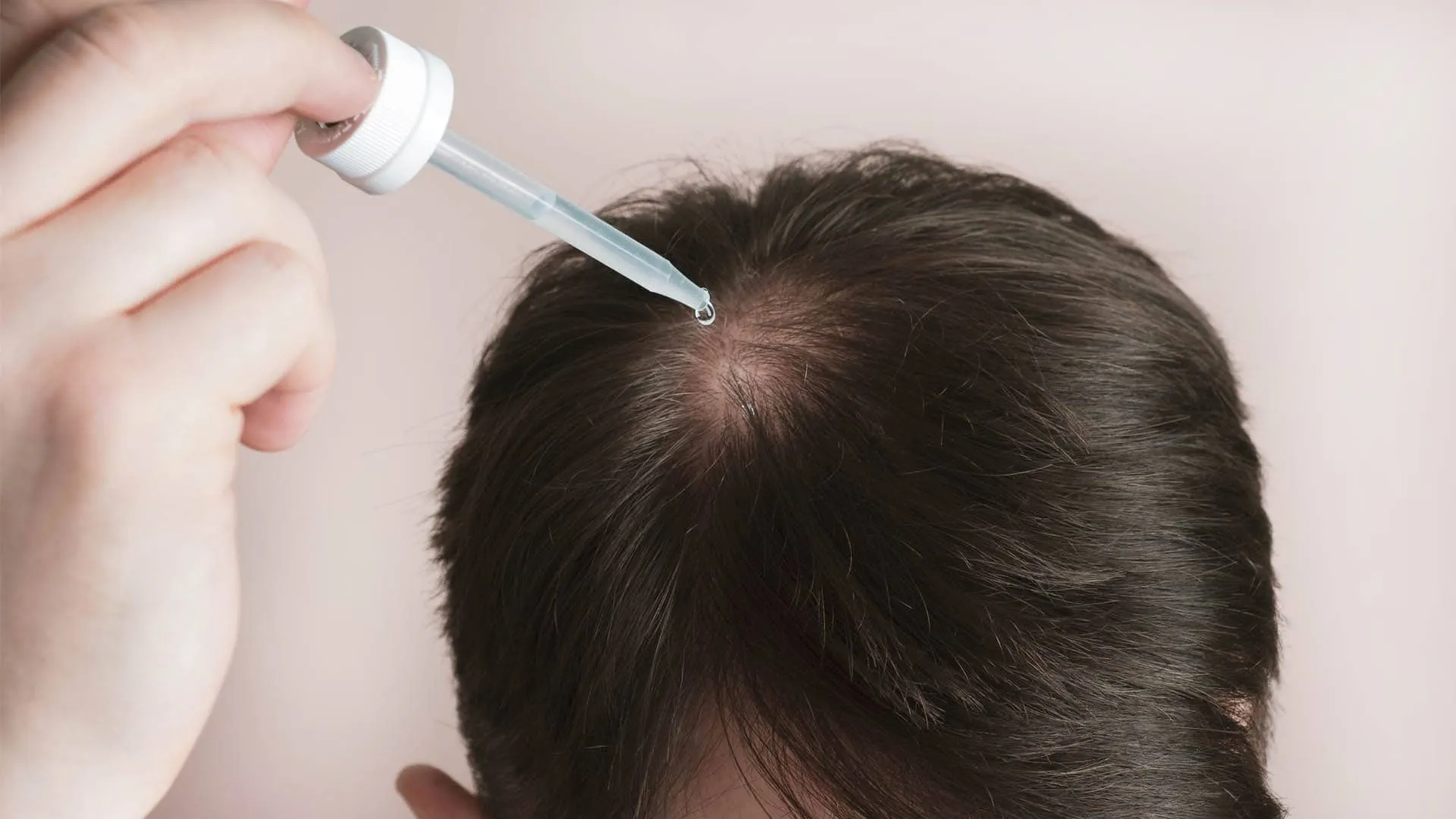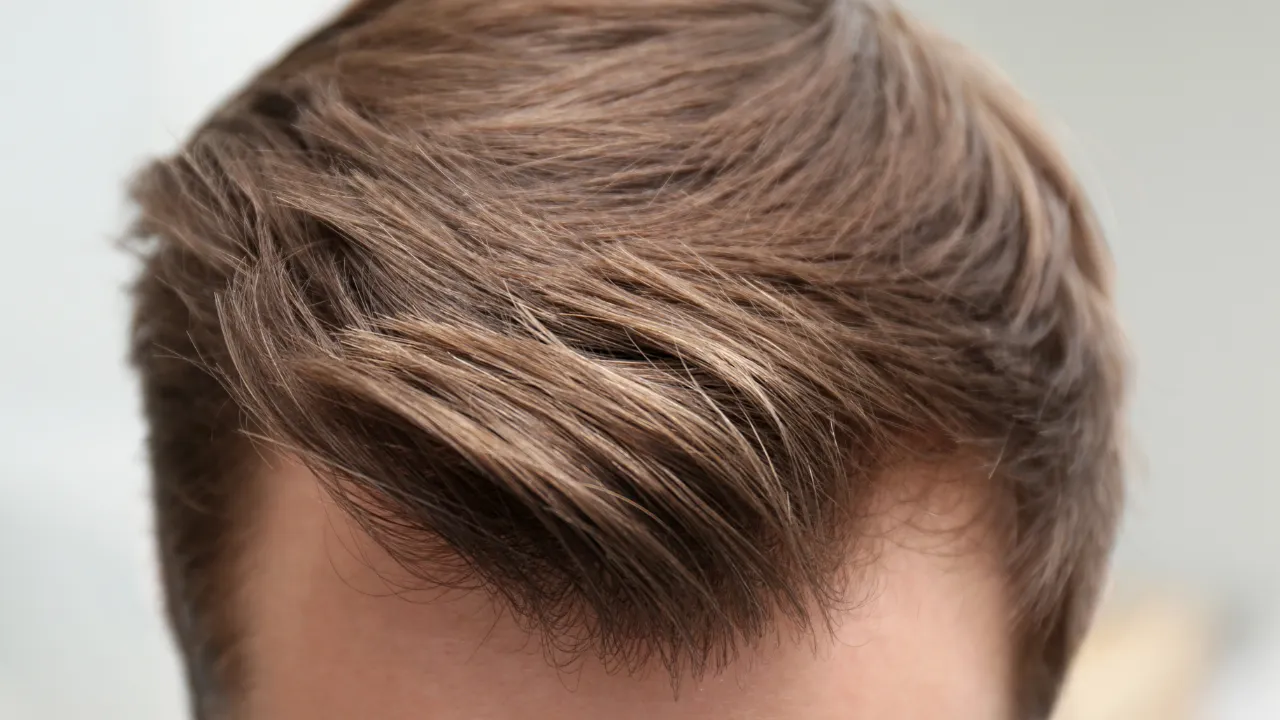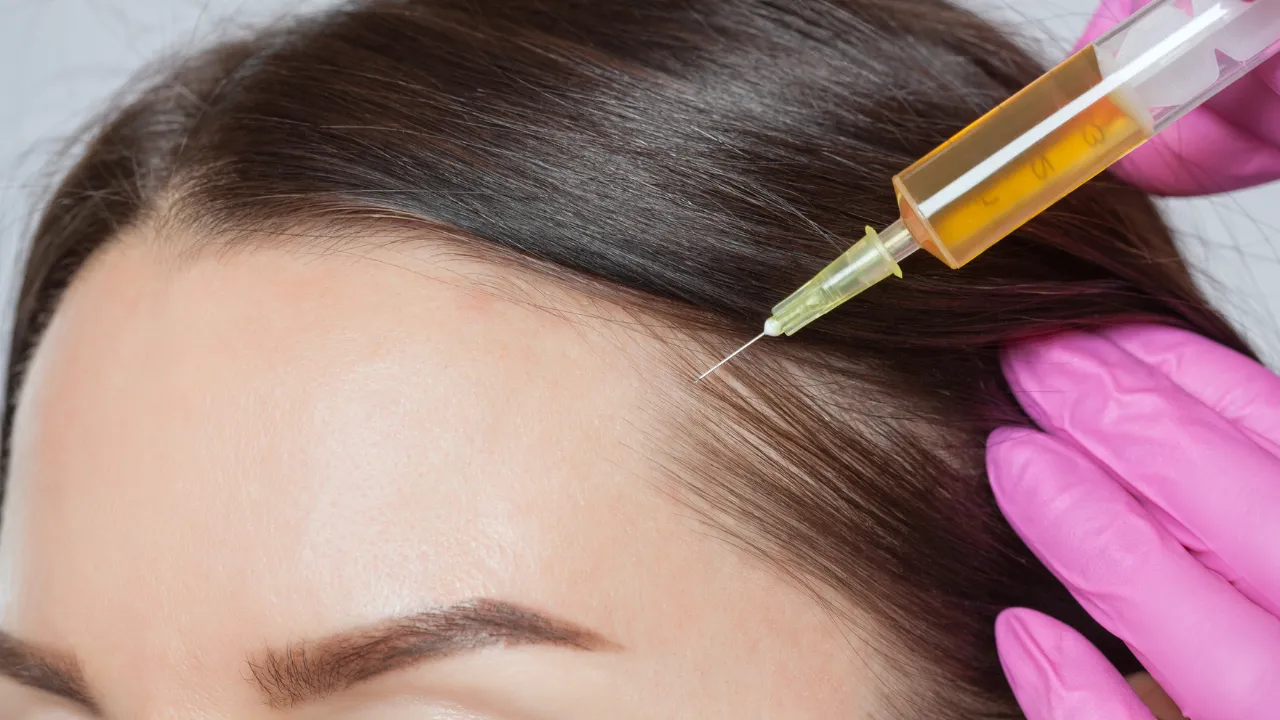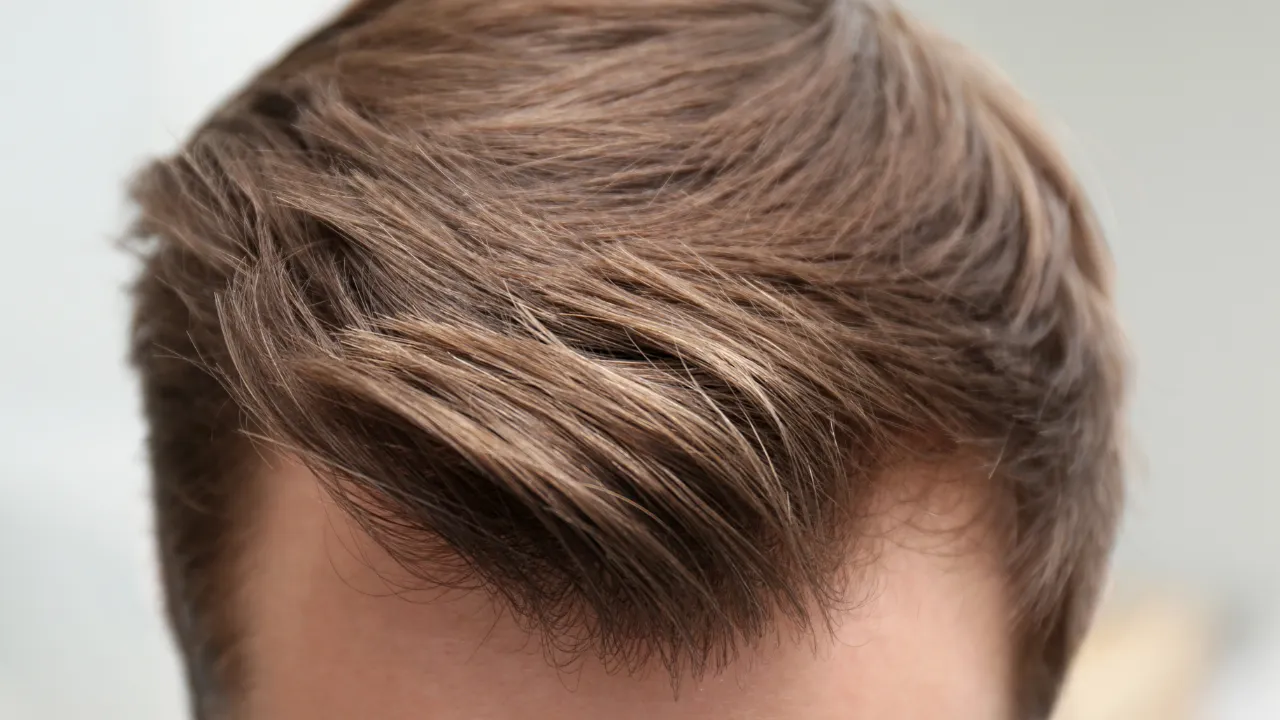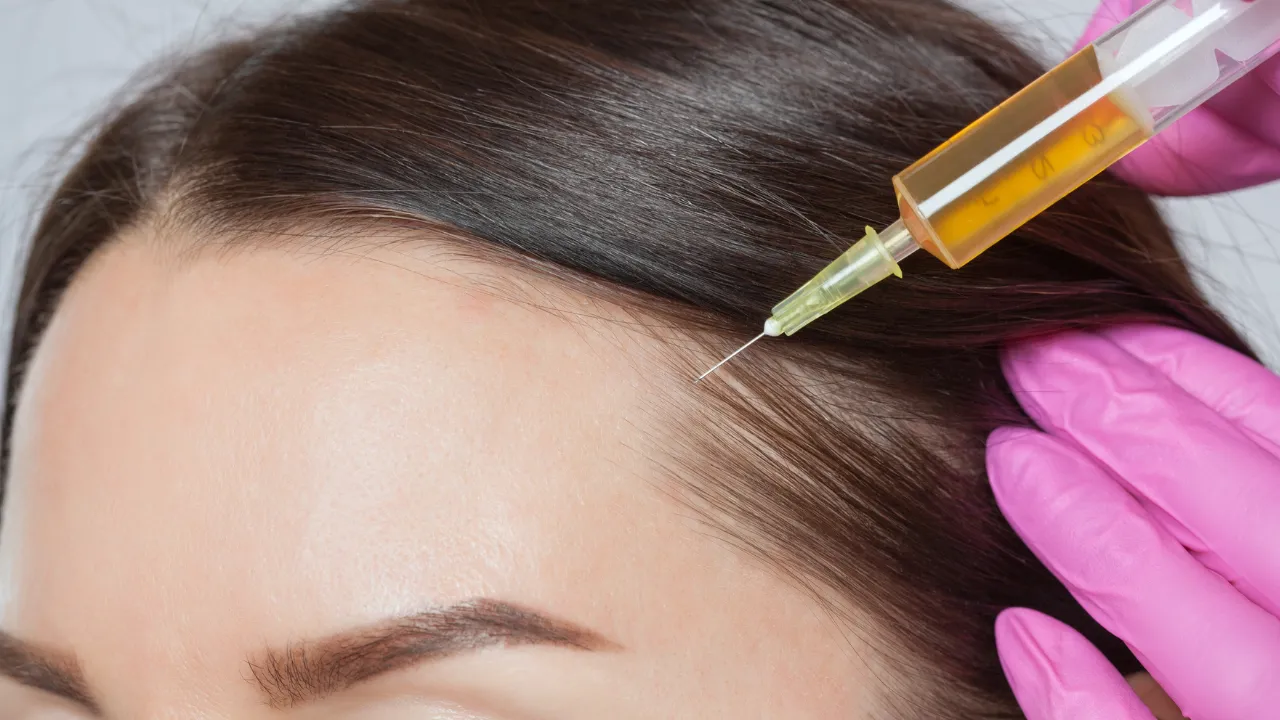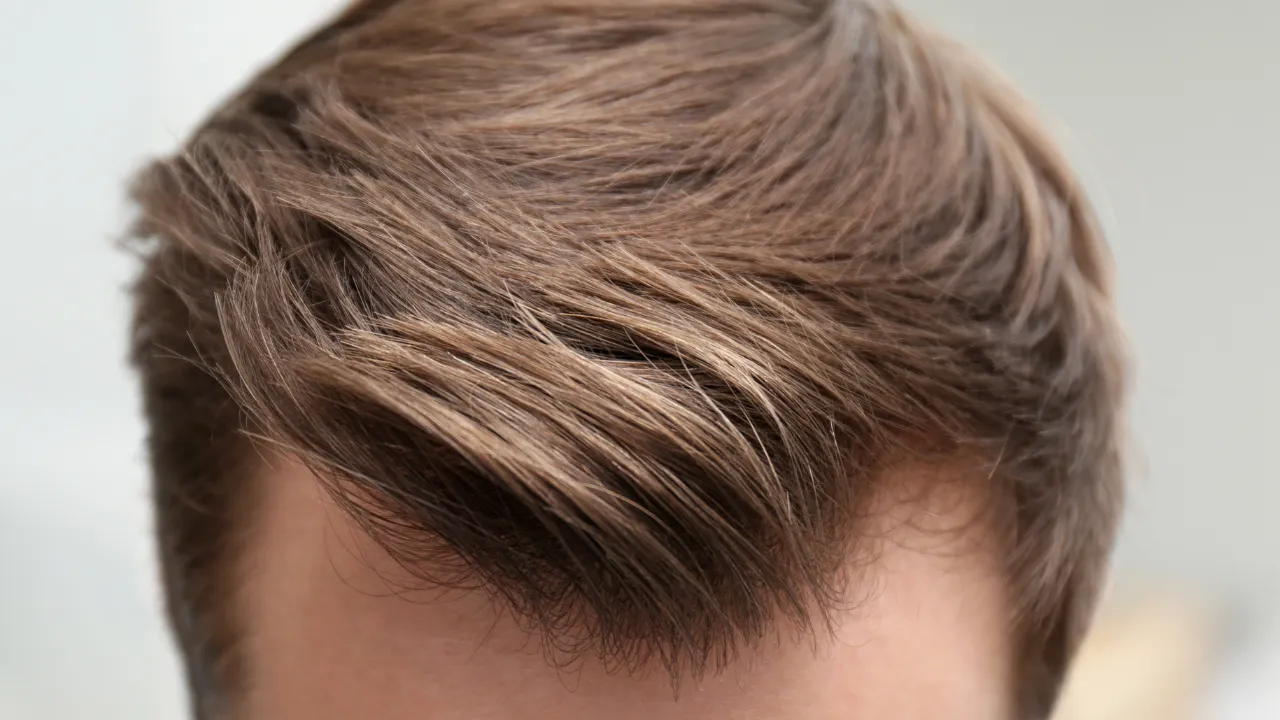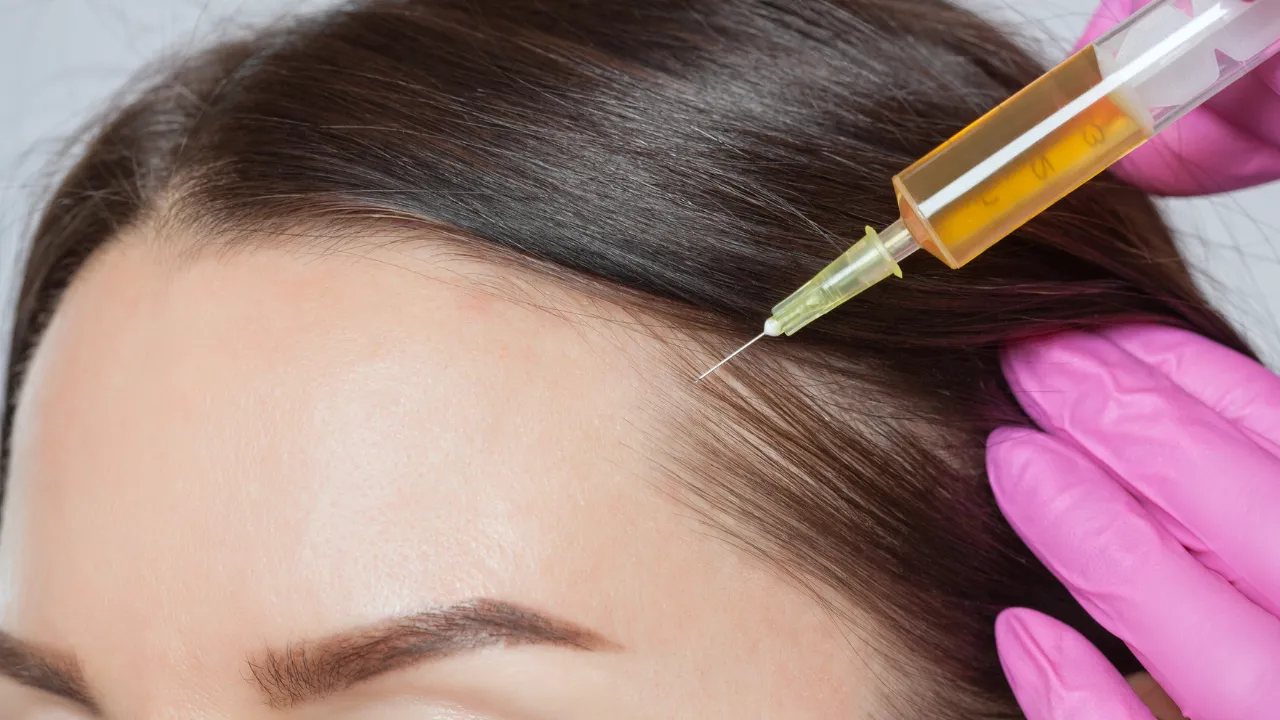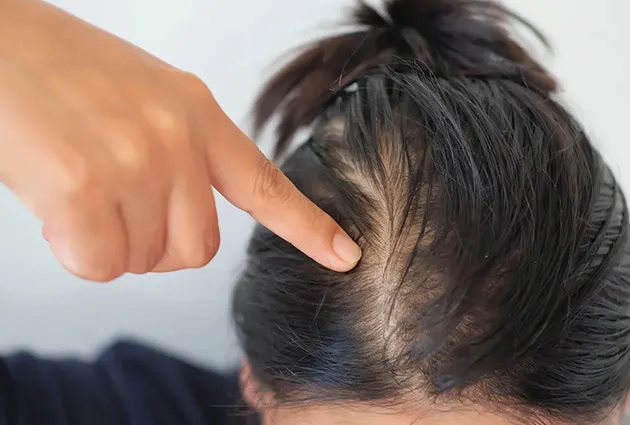Table of Contents
ToggleBald head patches can appear suddenly or gradually, often raising concerns about underlying health or hair loss. At Kopelman Hair, we identify and treat these conditions with tailored solutions. This article explains what causes bald head patches, how to recognize them, and what treatments may help.
Key Takeaways
- Bald head patches are often caused by alopecia areata, nutritional deficiencies, or scalp conditions like fungal infections.
- Early diagnosis improves treatment success through exams, pull tests, or biopsies.
- Most non-scarring bald patches are reversible with options like corticosteroids, minoxidil, or PRP.
- Stress, poor diet, and tight hairstyles can all contribute to patchy hair loss.
- Dr. Kopelman offers personalized care plans to restore healthy hair.
Types of Alopecia That Cause Bald Patches
There are multiple types of hair loss, but alopecia areata is one of the most common causes of bald head patches. Individuals may suddenly develop alopecia areata, presenting with coin sized patches where hair stops growing.
Other types of alopecia areata include alopecia totalis (complete loss of hair on the scalp) and alopecia universalis (loss across the body). These conditions are often caused by an autoimmune disease, where the body mistakenly attacks its own hair follicles.
Many people with alopecia experience cycles of hair loss and regrowth, which may occur several times over their lifetime. In most cases, hair grows back in the affected areas, although it may take time.
Why Bald Patches Appear on the Scalp
Bald spots head causes
Common causes include alopecia areata, infections, or stress. In the United States, over 6.8 million people are affected.
Sudden bald spot on head in women
Hormonal shifts, postpartum changes, or thyroid issues may trigger sudden bald spots in women.
What deficiency causes bald patches?
Low iron, zinc, or vitamin D levels can weaken follicles and cause patches of baldness. Blood tests help identify these.
Alopecia areata and related conditions
Alopecia areata causes the immune system to attack healthy follicles, resulting in patches of hair loss.
People with alopecia areata may feel itching or tingling in the affected area before visible symptoms appear.
Symptoms of alopecia areata include smooth, round bald patches and potential nail changes. The risk increases if there’s a family history of autoimmune or hair-related conditions.
Do Stress or Lifestyle Habits Cause Bald Head Patches?
Stress can trigger alopecia areata and telogen effluvium. Tight hairstyles, sleep loss, or extreme dieting may also lead to patches of hair fall.
Managing lifestyle factors can slow or reverse loss. Ongoing care and scalp checks help prevent recurrence of bald spots on the head.
How to Recognize Patchy Hair Loss
Hair thinning in patches
Early signs include small, smooth, round patches. These may appear on the crown or sides.
Patches of hair fall vs general shedding
Hair thinning in patches appears suddenly and is often confined to specific areas.
When baldness patches need medical attention
See a specialist if patches of hair fall spread or don’t improve. Inflammation, burning, or itching are warning signs.
Can Hair Regrow on Bald Patches?
Hair may regrow with early action. Some cases of alopecia areata improve on their own. To regrow hair on a bald spot fast, address the root cause with nutrition, stress control, or medical support.
Dr. Kopelman recommends combining therapies if progress is slow. Personalized plans are key for stubborn cases. Topical treatments may show results in 2–3 months. PRP therapy or corticosteroid injections often require repeated sessions.
Are Bald Patches Permanent or Reversible?
Most non-scarring forms of patchy hair loss are reversible, especially if treated early.
Scarring alopecia or untreated infections may cause permanent loss, so early diagnosis is essential.
How Is a Bald Patch Diagnosed?
Doctors use visual exams, pull tests, and blood work. If needed, a scalp biopsy helps rule out scarring or fungal issues.
At Kopelman Hair, Dr. Kopelman combines clinical evaluation with diagnostic tools for accuracy.
Effective Treatments for Bald Head Patches
Treatments depend on the cause. Over-the-counter minoxidil or medicated shampoos can help mild cases.
Advanced therapies include:
- Topical corticosteroids to reduce inflammation
- Minoxidil for regrowth support
- Anthralin for scalp inflammation
- PRP therapy using plasma to stimulate follicles
Each treatment for alopecia areata may have side effects like mild irritation or early shedding. Dr. Kopelman monitors all therapies closely.
Some patients use a patch for bald spot on head as a temporary cosmetic fix during treatment.
Types of Scalp Patches
Bald head dry patches
These may suggest eczema or dermatitis and often itch or flake.
Bald head white patches
White areas may indicate tinea capitis or scarring. Diagnosis determines the right approach.
Common Myths About Bald Patches
Early Action and Prevention Strategies
First signs to act on
Watch for thinning or small bald circles. Don’t delay evaluation.
Daily care tips
Avoid tight hairstyles, harsh styling, or neglecting scalp hygiene.
When to seek expert help
If symptoms persist or worsen, consult Dr. Kopelman for a tailored recovery plan.
Frequently Asked Questions About Bald Head Patches
If you’re noticing bald patches or unusual hair loss, early treatment can make a big difference. Schedule a consultation with Dr. Kopelman to get a clear diagnosis and a personalized treatment plan.


